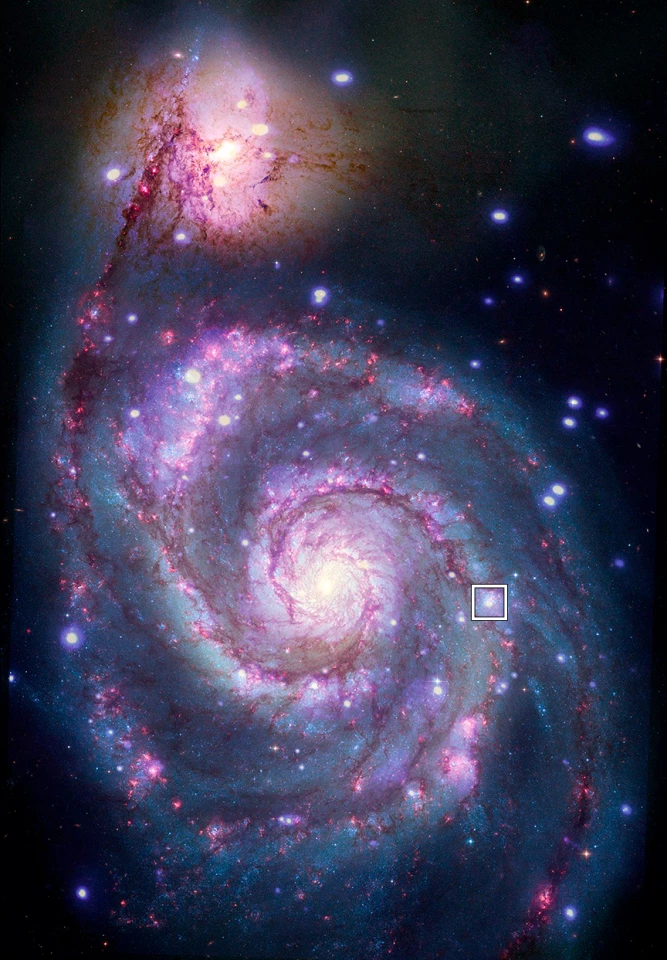NASA's Chandra X-ray Observatory may have spotted the first exoplanet outside our Milky Way galaxy. Located in Messier 51 (M51), also known as the Whirlpool Galaxy, the giant exoplanet candidate circles a black hole or neutron star 28 million light years from Earth.
Finding a new exoplanet is hardly stop-the-presses news these days. To date, over 4,000 exoplanets have been confirmed with many more thousands of candidates awaiting verification. However, all of these are located in our galaxy and most of them are within 3,000 light years of Earth.
These exoplanets are detected by a number of methods, but the most common is to record the light coming from a star and look for a characteristic dip in its brightness caused by a planet transiting between the star and Earth, producing a tiny eclipse.

A team of scientists led by Rosanne Di Stefano of the Center for Astrophysics | Harvard & Smithsonian (CfA) took a different approach by using the Chandra spacecraft to look at the brightness of X-ray binaries, which are star systems where a black hole neutron star is sucking gases from an orbiting companion star, producing X-rays.
The advantage of studying these is that these X-ray sources are much smaller in relation to any planets that might be orbiting the system, producing a more dramatic dip where the X-rays are completely blocked by the eclipse, which can be detected at a much greater distance.
In this case the exoplanet candidate is in the binary system M51-ULS-1 in the M51 galaxy. M51-ULS-1 consists of a black hole or neutron star and an orbiting companion star with 20 times the mass of the Sun. The research team found evidence of a three-hour dip and pause in the X-ray emissions, consistent with a planet the size of Saturn orbiting the system at a distance equivalent to twice that of Saturn from the Sun.

While an exciting development that could confirm that other galaxies have planetary systems, verifying the new exoplanet will be very difficult. Where many exoplanets orbit their stars in a period of days, the M51-ULS-1 candidate won't make another transit for about 70 years and there isn't enough reliable data to predict exactly when this will occur.
We know we are making an exciting and bold claim so we expect that other astronomers will look at it very carefully
Another question is if there actually is a planet or if the light curve was caused by a cloud of dust and gas, though the team says the X-rays didn't produce the X-ray spectrum that would be consistent with such a cloud. On top of this, for such a planet to be present it would have had to survive the supernova that produced the neutron star or black hole, which is unlikely.
Though M51-ULS-1 will have to wait seven decades for a second look, the team is scouring the archives of Chandra and ESA's XMM-Newton to find other candidates with shorter transits.

"We know we are making an exciting and bold claim so we expect that other astronomers will look at it very carefully," says Julia Berndtsson of Princeton University in New Jersey. "We think we have a strong argument, and this process is how science works."
The research was published in Nature Astronomy.
The animation below discusses the possible extragalactic exoplanet finding.
Source: NASA






